
Another Close Call on Richardson Bay
We spoke with Curtis Havel, harbormaster for the Richardson’s Bay Regional Agency (RBRA), who shared this report of another winter sinking of a poorly maintained vessel on Richardson Bay. The story of winter sinkings and groundings, requiring taxpayer funds and multiple agencies to clean up the resulting debris and environmental damage, has practically been an annual feature of Latitude 38 since it was founded in 1977. Like Brock de Lappe on the Oakland Estuary, Havel is doing his best to clean up the Bay and avoid the damage caused to people, property and the environment by boats foundering in winter storms, or at any time of the year.
Havel told how Richardson Bay narrowly avoided an environmental disaster when the 85-ft wooden boat Suisun was raised from the Bay floor after it sank during a gale-force windstorm in late January.

On Wednesday, February 9, the Richardson’s Bay Regional Agency and its partners at the US Army Corps of Engineers finished disposal efforts of the Suisun, which sank during the early hours of January 26. “It was the best outcome that could be expected for the vessel,” said Havel, who was concerned that the historic wooden boat would break apart on the Bay floor before salvage operators could raise and safely tow the boat away.
“If that had happened, there would have been thousands of pounds of debris scattered on the Bay floor, plus all the fuel, motor oil, and any hazardous chemicals that had been on board,” Havel said. “The impact of that amount of debris would be disastrous for the local environment. Plus, the wreck was a safety hazard. We owe it to the experts from Parker Diving Services who were able to float the vessel and tow it to the Army Corps dock for disposal.”

Protecting the environment in Richardson Bay is a key concern because of its importance for the fish, sea lions, dolphins, and tens of thousands of birds that rely on the Bay for food. Casey Arndt, director of the local Richardson Bay Audubon Center and Sanctuary, part of the National Audubon Society, was especially heartened to hear of this outcome.
“Richardson Bay and its eelgrass beds are critically important for wildlife,” Arndt said. “Pacific herring, for example, is the last commercial fishery in San Francisco Bay and 90% of those fish spawn right here in Richardson Bay, especially during this time of year. Removing marine debris and stopping the discharge of oil into the Bay is a great way to protect these vital natural resources.”
It’s rare that the public gets to celebrate the avoidance of an environmental disaster, said Havel, but that’s why RBRA is working hard to remove unseaworthy boats from the Bay before they sink or run aground, causing damage to the environment and costing taxpayers thousands of dollars in salvage efforts.
The occupant of the Suisun, who had been living on the vessel in violation of the Bay’s 72-hour anchoring regulations, was rescued by the United States Coast Guard as the boat sank. He retrieved his belongings from the boat a few days later, and a caseworker from Marin County’s Downtown Streets Team successfully placed the individual in temporary, transitional housing while work continues to find a permanent housing solution.
“It is never our intention to render an individual homeless by seizing their vessel, even if they are in violation of rules against permanent anchoring in Richardson Bay,” Havel said. “This boat sank in a windstorm. It was underwater and no longer operable. At that point, we were lucky to get it out of the Bay in one piece.”
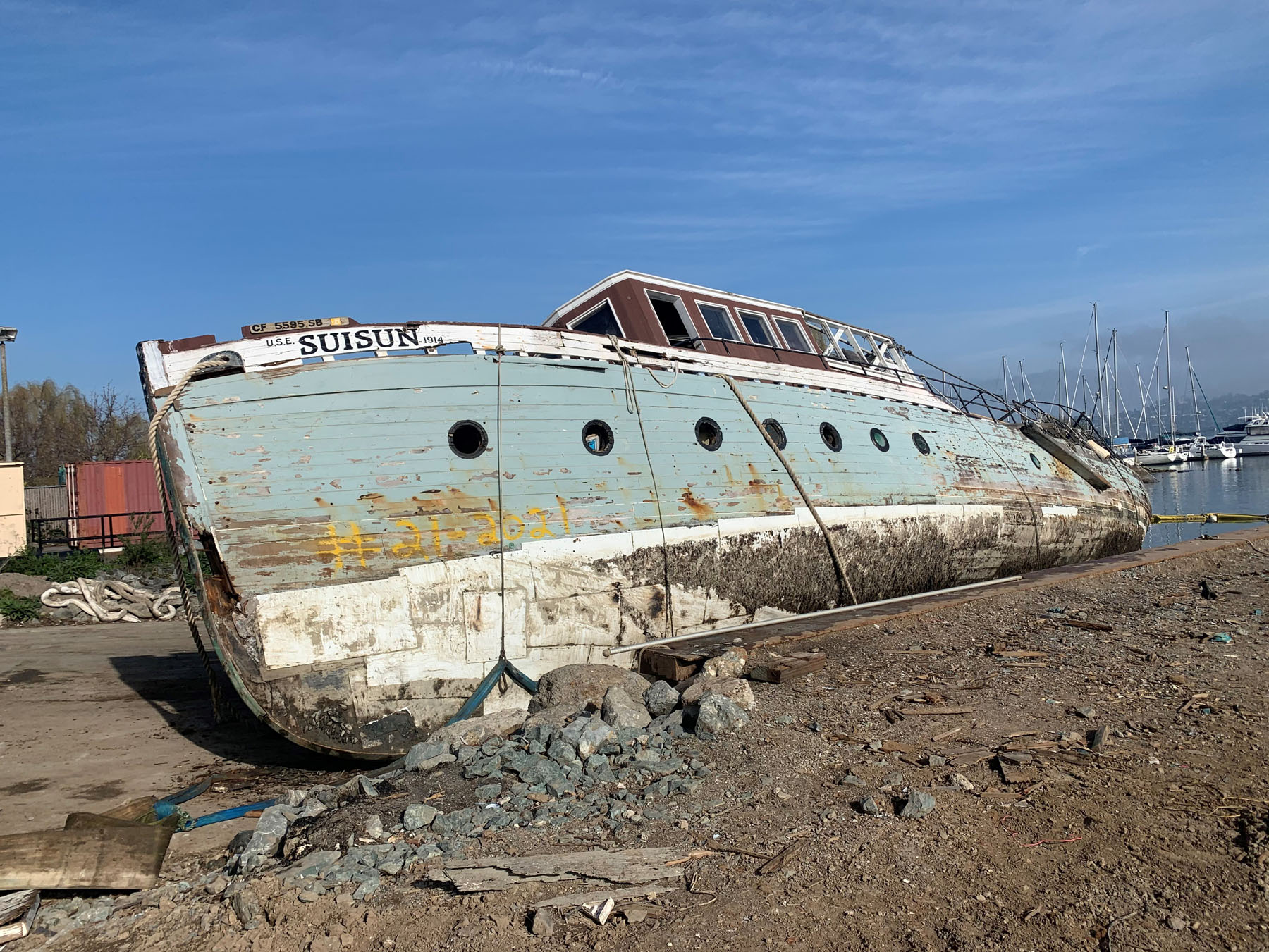
So far this year, at least 25 boats have gone adrift in Richardson Bay, many of them not operable and unseaworthy. One of the unoccupied vessels that went adrift hit an occupied vessel, causing it to sink. While the boat’s owner made it out alive, her dog drowned in the process. Since mid-January, at least three additional boats have sunk while at anchor here.
“This level of vessel catastrophe is highly atypical for an anchorage of this size,” Havel said. “The loss of life and damage to the environment has to stop. Our goal with removing marine debris and unseaworthy vessels from the Bay is to have a safe, well-managed, temporary anchorage where the environment is protected and the area’s rich maritime history thrives.”
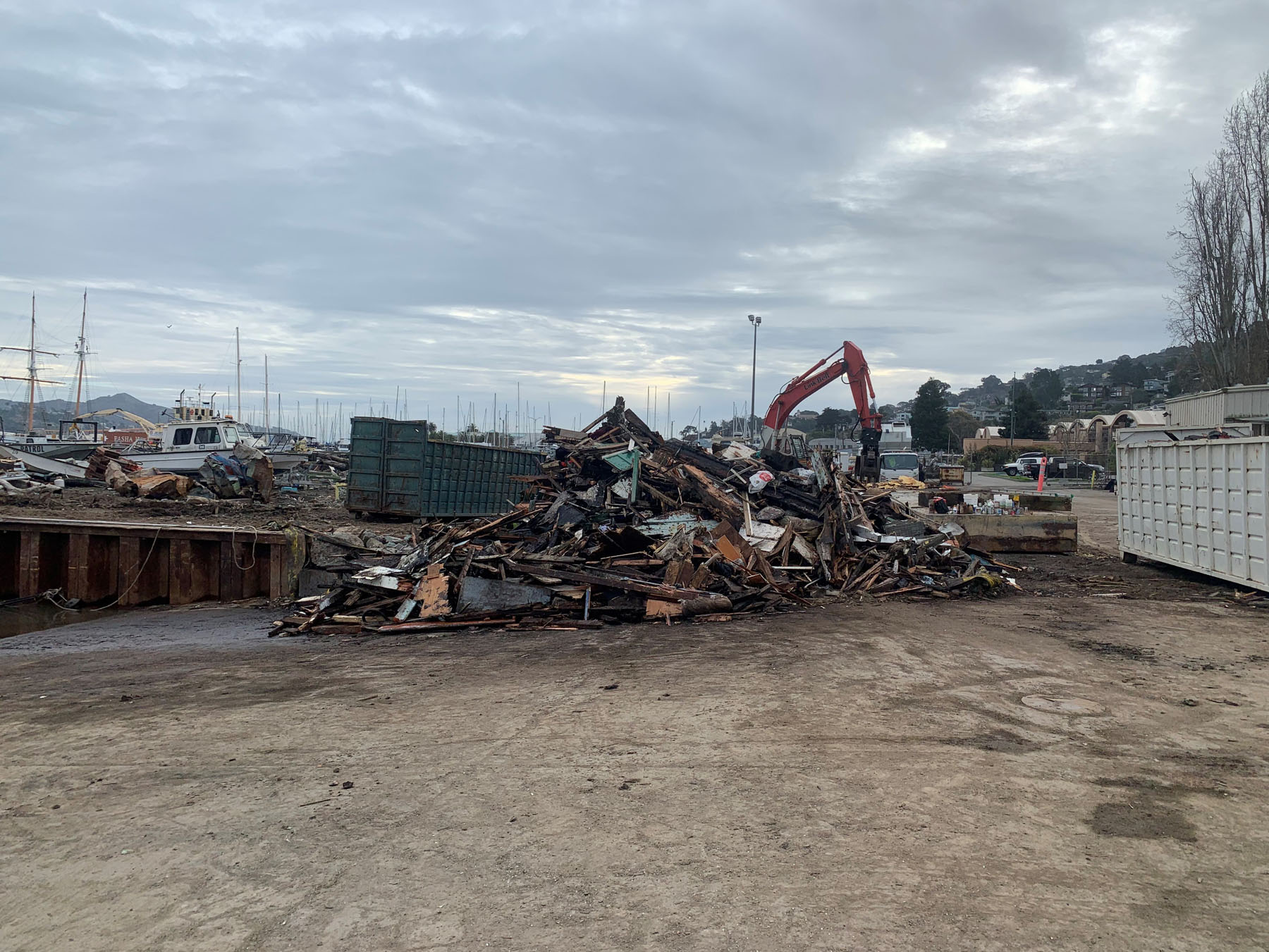
Since we remain in the midst of winter with similar storms possible at any time in the months ahead, Havel and his team hope that all mariners in Richardson Bay tend closely to their boats. He said, “I encourage mariners to take the necessary precautions to protect themselves and their vessels.”
Nobody at Latitude 38, or, we suspect, any sailor, likes to see the loss of someone’s home or any boat that holds so many memories. However, the environmental damage and the endless possible alternative beneficial uses of the public funds, like housing the homeless, that are currently required to clean up these problem vessels are clear enough reasons to support the work of Curtis Havel and the RBRA.
Helping Make a Sailor’s Dreams Come True
In the February issue of Latitude 38 we shared a letter that 22-year-old Rachel Morris wrote to renowned sailor Liz Clark. Rachel is looking for a mentor who can help her realize her dream of making a life from sailing. Liz was so impressed with Rachel’s letter and story that she sent it to us.
When 25-year-old Liz Clark solo-sailed south from Santa Barbara in 2005 aboard the Cal 40 Swell, she had little idea what lay in store beyond surfing and exploring new places. Almost 16 years later, she has become an author, motivational speaker, environmental advocate, and an inspiration to many — especially to other young women hoping to fulfill their own dreams of adventure. Liz gets lots of letters and emails from young people, but this one was so eloquent and heartfelt, she asked us if we would share it so that the author might find her perfect mentor, like Liz, who was so fortunate to find hers in Dr. Barry Schuyler. Liz is currently taking a break from cruising
to focus on her environmental activism from her land base in French Polynesia, where Swell is moored out in front.
Liz Clark, My name is Rachel Morris, I have a big dream and I am hoping you can help me make it a reality. I am sorry if this is long or if you receive many of these kinds of emails, but I have a driving feeling that I need to send this on the off chance that you can help me.
I want to sail. I want to sail so bad my stomach gets butterflies just thinking about it in my small apartment in the mountains of North Carolina. I am 22 years old and teach second grade at an alternative school in Asheville. I have recently graduated from the University of North Carolina at Chapel Hill with a degree in Neuroscience and Psychology, and before July 2020, had never sailed before. But this dream has been deep in my bones, floating around my head and up in the stars for my whole life.
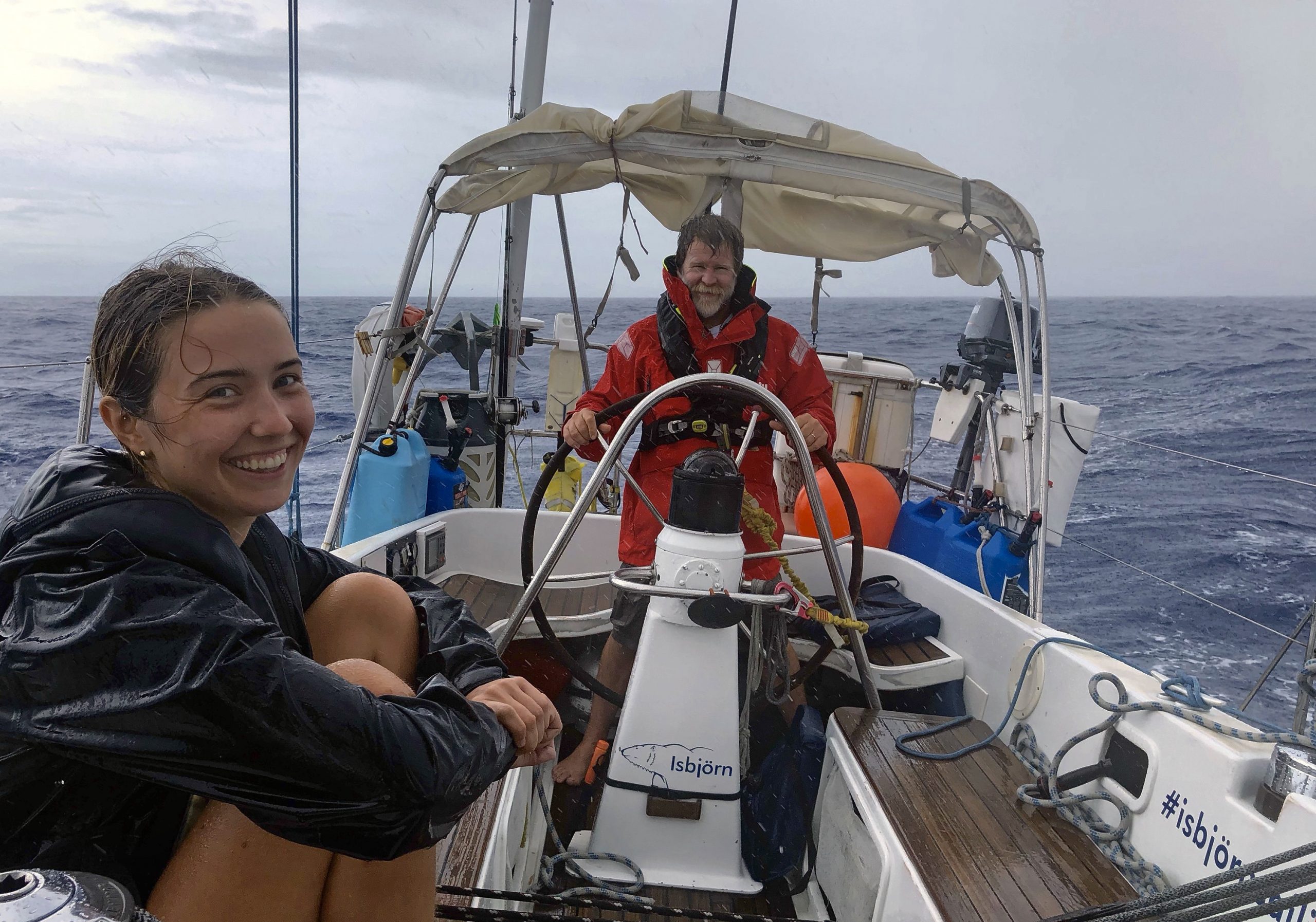
My greatest role model was my great aunt, Nina Ann. She sailed all around before getting breast cancer and moving her boat to Lake Norman, NC, to receive chemotherapy. My very earliest memories are there, aboard her boat called Pure Joy. I would sit in her lap in the cockpit, wearing her red baseball hat, while she told me how she would teach me to sail once she got better. Unfortunately, cancer won the battle before that happened. She died when I was 5. I have been wearing a red baseball cap and searching for the perfect sailing mentor ever since. I rejected any typical path to learning to sail due to the deep desire for some older person to take me under their wing and teach me.
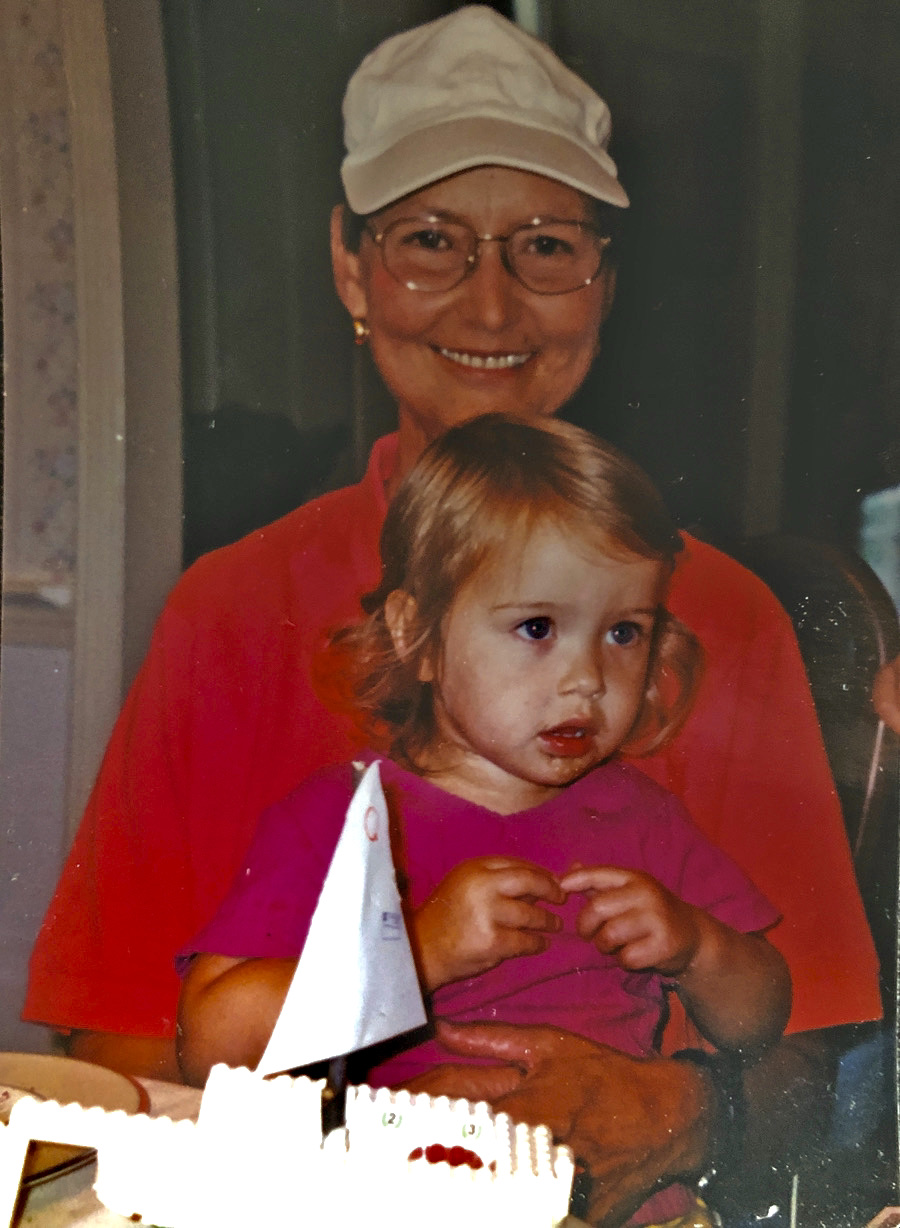
This May, with inter-generational sailing magic on my side, I got the craziest last-minute opportunity to hop on board a Swan 48 to compete in the Spirit of Bermuda Rally. My first time sailing was a mad dash to Bermuda and back, beating upwind the entire way there. Baptism by fire. I began to love fighting my way through making dinner for everyone. I got better at tacking and slowly gained confidence going forward, even in large seas. I grinned through the 48 hours we played ‘dodge squall’ and cried during my night watch when I saw bioluminescence for the first time. Being offshore was the most exhausting, exhilarating, fulfilling thing I have ever experienced.
Latitude 38 Logowear Clearance Sale
Replacing the Battery Meter on ‘Sampaguita’
This month The Resourceful Sailor needs to replace an aged, non-functioning battery meter. What does he do when the original parts are no longer available? Read on to find out …
The analog battery-testing meter in Sampaguita, a 1985 Pacific Seacraft Flicka 20, started acting up a few years ago. It is part of the Marinetics electric panel of the same vintage. Adjusting the fine-tuning dial and tapping on the face used to get it to work. No longer. The needle made a hard stop at about 11 volts, and I knew this was wrong.
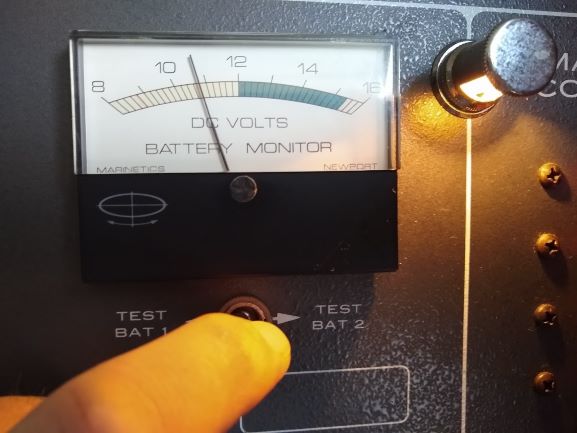
My first thought was to open up the meter and see if there was a simple fix. Questioning my expectation of success regarding that approach, I wondered about changing out the meter. Marinetics is long gone, so an OEM was not an option. Hoping to keep modifications to nil, I took measurements of the meter, cutout, and mounting studs. A search of the internet turned up precisely one with the proper dimensions, scale arc, and range. It had the appropriate aesthetic and could ship to me for a total of $14.95. I went for it.
On its arrival, it was very promising at first glance. It seemed to be the same part from a different manufacturer. I disconnected the battery, opened up the panel, made some comparisons, and was satisfied it would fit properly. I disconnected the two terminals and four mounting nuts and removed the old meter. The new one went perfectly into its place. I added the supplied nuts and washers to the studs and connected the wire terminals.
While it appeared simple, I decided to test it before I closed up the panel. I reconnected the battery and toggled the test switch. And the needle pegged downward. Ha! I had just found the dissimilarity of the parts. The new meter had the negative and positive terminals in opposite positions from the old. I did not initially notice this, and once I was installing it, my vantage point had limited visibility.
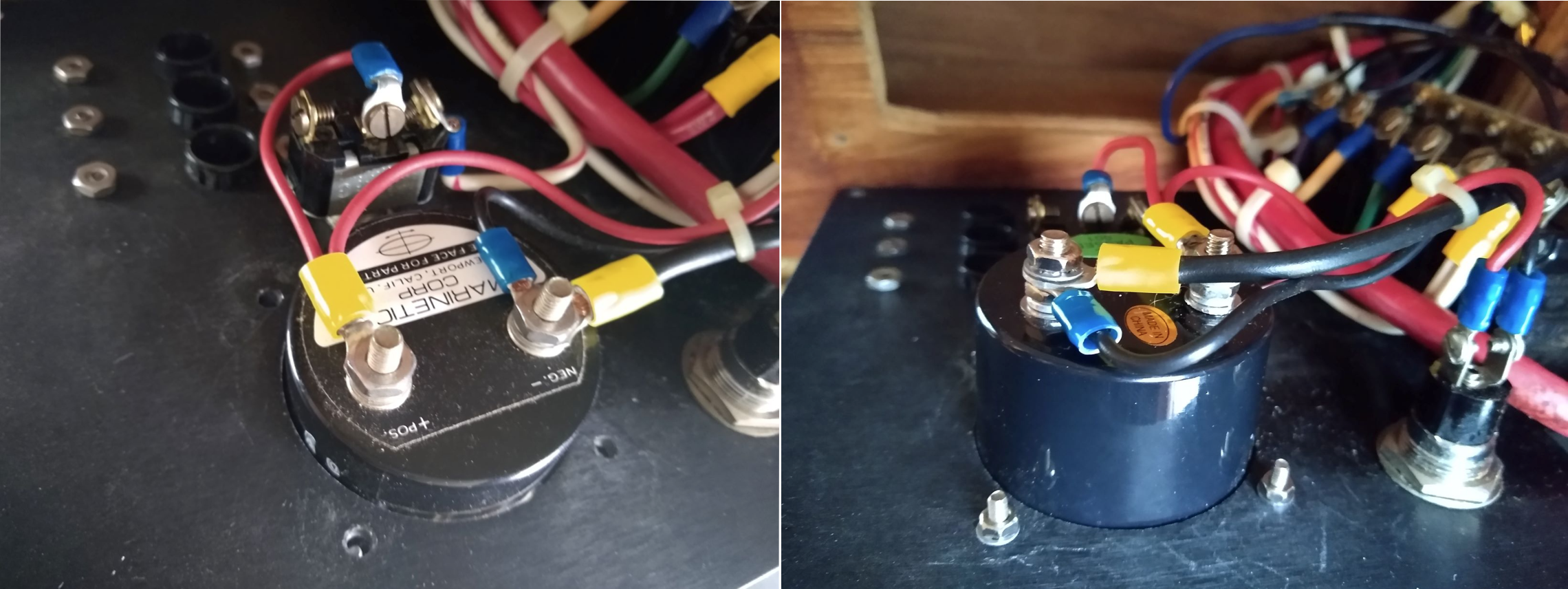
In classic boat-repair fashion, this is what took the bulk of the time. The positive wires reached their terminal fine. However, the main negative cable from the bus bar was a little short. I inspected the bus bar and realized I could rearrange two wires to get the adequate length. After trial and error, I came up with an acceptable solution. I reconnected the battery, flipped the test toggle switch, and voila! The meter worked, and it looked right too.
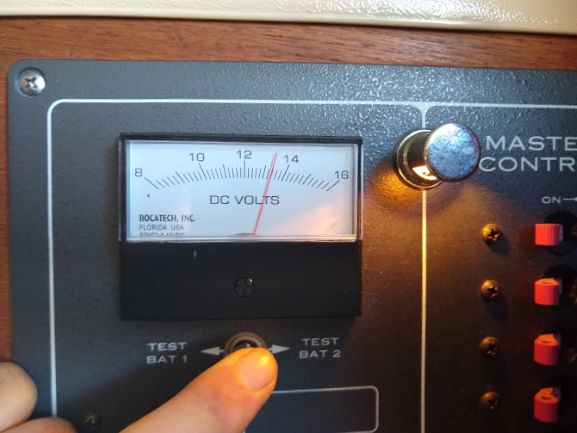
The Resourceful Sailor offers examples of simple approaches to boat maintenance and modifications. Remember, keep your solutions safe and prudent, and have a blast.
Luna Rossa Prada Pirelli’s Hot Start
The opening weekend for the Prada Cup ended with Luna Rossa Prada Pirelli sweeping the first four races in dominant fashion over INEOS Team UK.
The results were a wake-up call for the British, leaving them looking for answers and possibly grasping at straws to find a way to claw back into contention. This against an Italian team that sailed perfectly.
The Italians controlled the start in each race, then conducted a textbook lesson in classic match-racing tactics, leaving Sir Ben Ainslie, CEO and skipper of INEOS Team UK, little more than tactical table scraps to work with and no passing lanes during any of the six legs in each of the four races — or all 24 for that matter. The surprising results left the British with an America’s Cup World Series ‘Groundhog Day’ hangover.
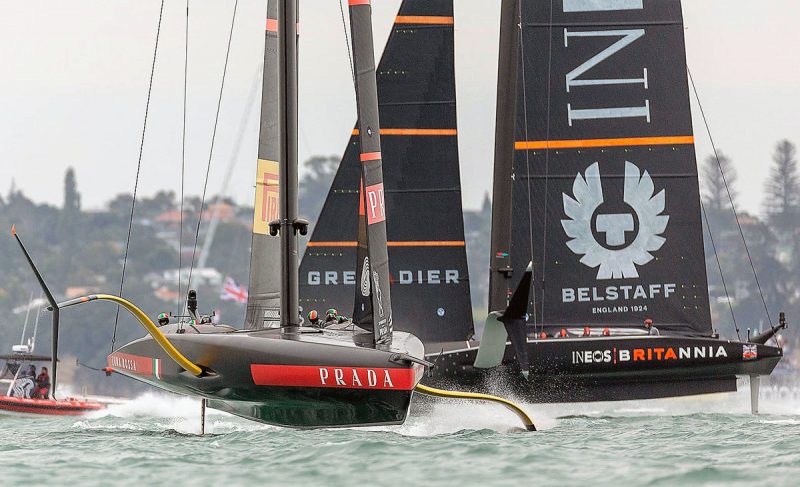
“Obviously we are super-happy,” said Francesco Bruni, co-helmsman for Luna Rossa Prada Pirelli. “The British are not easy to beat. Even with the bad starts they had, they were very close and they wouldn’t give up. In these situations, tacking on your competitor or giving them space is a very hard decision. But if you want to keep the game very close, and to squeeze the opponent into a corner, you need to keep tacking. This is something the grinders don’t like. INEOS was pretty much in phase all the time, and we had to stay with them.”
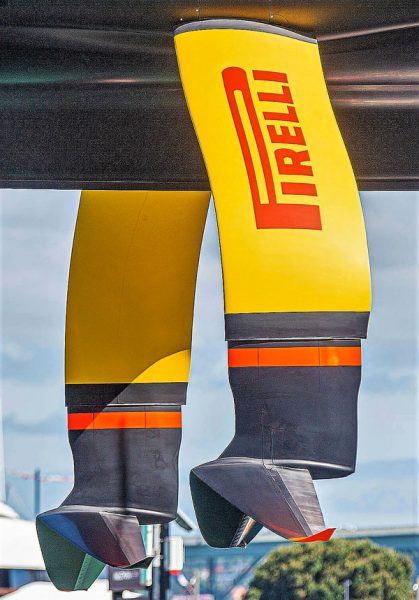
As predicted, the weather to start the Prada Cup Final on Saturday was a bit fickle and notoriously tricky to navigate, thanks to the complex land masses (old volcanoes) that surround the racecourses. “I don’t look at weather forecasts anymore. They change every three hours down here,” said Luna Rossa’s team principal Max Sirena.
But what started out light and shifty in Race 1 turned into a healthy 14-16 knots, for the most part, for the remaining three races, which should have played directly into INEOS’s hand.
It was not to be.
From the get-go, things did not go the Brits’ way. They fell over their foils at the start and struggled to pop back up. They sat stationary for more than a minute, allowing Luna Rossa to stretch out an early 600-meter advantage on the left side of the course, which showed more pressure.
Even after INEOS finally got going it was over tactically. Luna Rossa was careful to protect her advantage and stretched out gate after gate to finish with a comfortable 1:56-minute lead.
“In the first race we made a mess of the start, but after that we had a good race. They did a great job keeping it tight, two pretty even boats, two great teams,” said Ainslie. “We came out of the wrong side. We are not happy about it, although it was a good race. The grinders, with so many tacks (17), are on the limit. They were really pushing hard, but this is what they train for. They do all the hours in gym for this. They say they don’t love it, but secretly they probably do.”
In the second race, even as the winds favored Britannia, the Italians again controlled the course and played the shifts perfectly to protect their narrow lead and finish 26 seconds in front.
“Tough day. We are not happy with it. We gave away two races to these guys,” said Ainslie “At this level you can’t afford to make any mistakes, and we made too many. So, we have to go away, regroup, get ready for the next race, and come out swinging.”
“We are happy, but the focus must remain high,” said Bruni. “We have to keep improving. We can feel the Italians cheering for us. The support we receive is amazing. People think that Italy is all about football, but sailing is having a good fight at the moment.”

In Race 3 on Sunday, both boats entered the pre-start area at a blistering 46 knots and remained close, as Luna Rossa chased Britannia out toward the right-hand extreme of the pre-start area. As they rocketed back toward the start, INEOS tried to gain an advantage to leeward by getting a hook, but the ploy was late on arrival and their gamble failed. The result was that Luna Rossa controlled the critical start and won the race by 13 seconds.
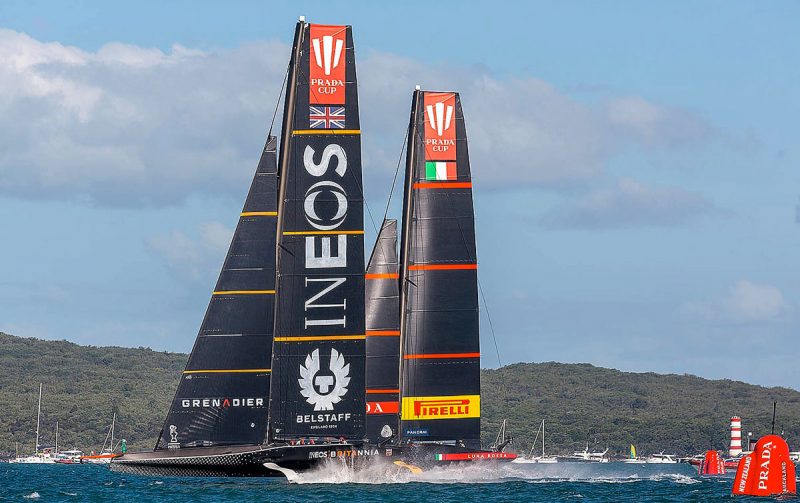
“We just got a bit greedy going for a hook,” said Ainslie. “We thought it was on for a split second. With these match-race starts, you can go from hero to zero pretty quickly.”
Race 4 was a disaster from the start. Ainslie lost control of Britannia as they crossed Luna Rossa before jibing to leeward and almost pitched her over in a capsize that looked painfully reminiscent of American Magic’s demise. But thankfully the British were able to maintain rudder and some foil control, shaking it off. INEOS hit the start line with some momentum, still slightly behind. But the damage had been done, and the Italians were able to control the race, winning by 41 seconds.
“We wanted to be aggressive at the start, but we lost control of the boat, which you can’t afford to do,” said Ainslie. “Something went wrong with the lifting of the board in the heel of the boat, and we had a wipeout. But don’t worry; I’m fine,” he added, referring to being pinned leeward of the main.
“We lost control,” said Giles Scott, INEOS tactician. “The windward board would be pulling down and breached the surface of water. It absolutely cost us the start.”
“It’s hard every time you go on the water, because for this class of boats we haven’t done a lot of racing,” said Jimmy Spithill, Luna Rossa co-helmsman. “The boys have executed great maneuvers. We were able to get around and ahead of them. The score doesn’t reflect how close it is. You are a split second away from a mistake which can end it. We take it race by race, day by day.”
It was another bad day for INEOS, who have dug themselves into a hole that could be insurmountable. Shortly before the evening press conference, the news took a turn for the worse. It was announced that COVID-19, potentially the British variant, had been discovered in Auckland. Then came word.
“As a result of the government announcement of a Level 3 lockdown in Auckland, initially for 72 hours, the next scheduled race day on Wednesday, February 17, has been postponed, and the event village will not be open to the public during this time,” reported the America’s Cup Event spokesperson. “We will be working with the authorities and relevant agencies over the next few days to work through the ongoing ramifications.”
All concerned were disappointed with the delay in races and practice time, but clearly the safety of the Auckland community was paramount. “We will do whatever the authorities advise us to do,” said Ainslie. “Of course, it’s more important that people are safe and healthy. It’s bad news, a timely reminder of what the world’s going through, isn’t it? We’re very fortunate to be out here doing a yacht race which we all love.”

As we sit and ponder the next few days, the teams have been notified that they will be allowed to practice, which is good news for all. But the Italians are the ones who sit in the catbird’s seat right now. Clearly the communication onboard Luna Rossa has improved immeasurably in their unique twin-helmsman configuration. “We have [tactician] Pietro Sibello more involved,” said Spithill. “He’s a fantastic sailor out of Italy. He has stepped up and strengthened the connection that Francesco and I have. He was the missing link and a key piece. I think it’s made a big improvement for us.”
Where does this leave Ainslie & Co? Who among us thinks Spithill is going to blow a four-race lead? Remember, this is the guy who was in the driver’s seat in the 2013 America’s Cup Match and won when he was seven races down! The Italians have been passionate about winning the America’s Cup from the first foray with Azzurra in 1983. If they succeed this time around, it may be just what the Auld Mug needs to get off the back burner and onto the front pages again.

